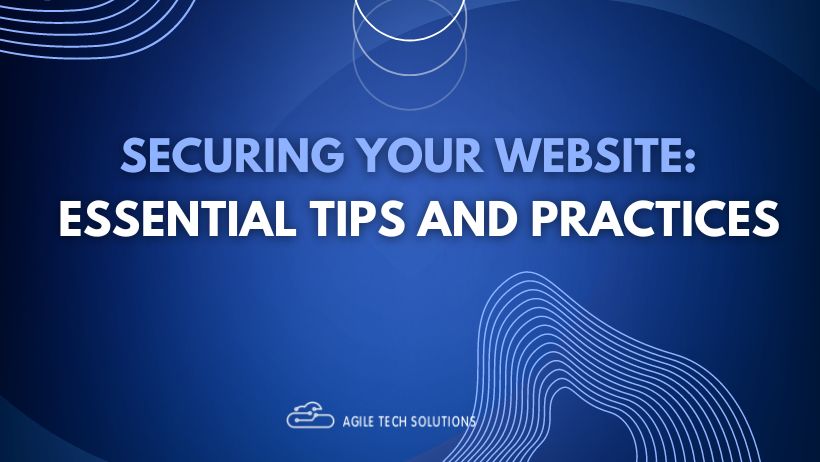
As a business owner or website manager, the security of your website should be a top priority. Failure to secure your site can result in loss of data, hacked accounts, and ultimately harm your business. With the rise in cyber threats, it’s more important than ever to take the necessary steps to protect your website. Here are some essential tips and practices for securing your website.
Use HTTPS: The first step in securing your website is to use HTTPS. HTTPS ensures that any data sent between your website and the user’s browser is encrypted, making it harder for hackers to intercept and steal information. You can easily switch to HTTPS by purchasing and installing an SSL certificate.
Keep software up to date: Regularly updating your website software, including plugins and themes, can help close security vulnerabilities that can be exploited by hackers.
Install a security plugin: Using a security plugin can help identify and prevent potential security threats by monitoring website activity and blocking malicious traffic.
Change Your CMS Default Settings: You must change the default settings in your Content Management System (CMS), such as WordPress. Every CMS is vulnerable to attacks due to its default settings, which include usernames, passwords, and directories. Hackers can leverage this information to take advantage of your website.
To secure your website, change your CMS default settings by doing the following:
-Change your username and password to something unique and difficult to guess.
-Change the directory and file permissions to read and execute only.
-Remove any unnecessary users or permissions.
-By taking these measures, you can secure your website from various attacks.
Use Strong Passwords: This may seem like common sense, but using strong passwords is critical in securing your website. Passwords should be at least 12 characters long and include a combination of upper and lowercase letters, numbers, and symbols. Avoid using easily guessable passwords or using the same password across different accounts.
Backup Your Site: It’s essential to regularly backup your website to ensure that your data is safe in case of a cyber attack or accidental deletion. Backup your site to an external hard drive or cloud storage to safeguard against any unexpected incidents.
Enable Two Factor Authentication (2FA): Two-factor authentication provides an extra layer of security by requiring users to enter a unique code in addition to their password. This code is often sent to the user’s phone or email, making it harder for hackers to gain access to an account.
Limit user access: Only grant website access and permissions to trusted users and revoke access when it’s no longer necessary.
By following these essential tips and practices, you can enhance the security of your website and ensure that your business and user data remains safe from cyber threats.





This was so helpfull.
Fantastic article about security tips.